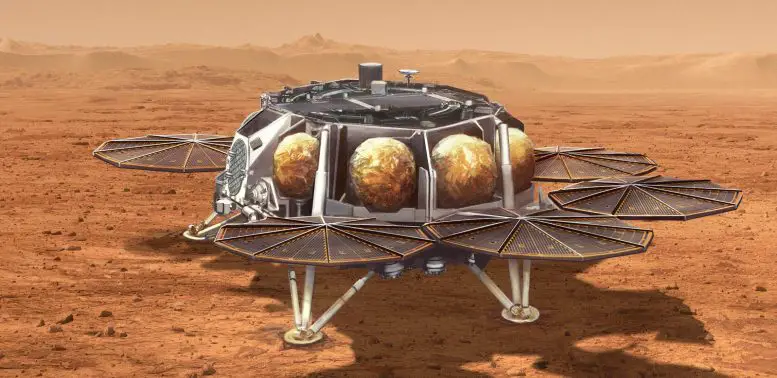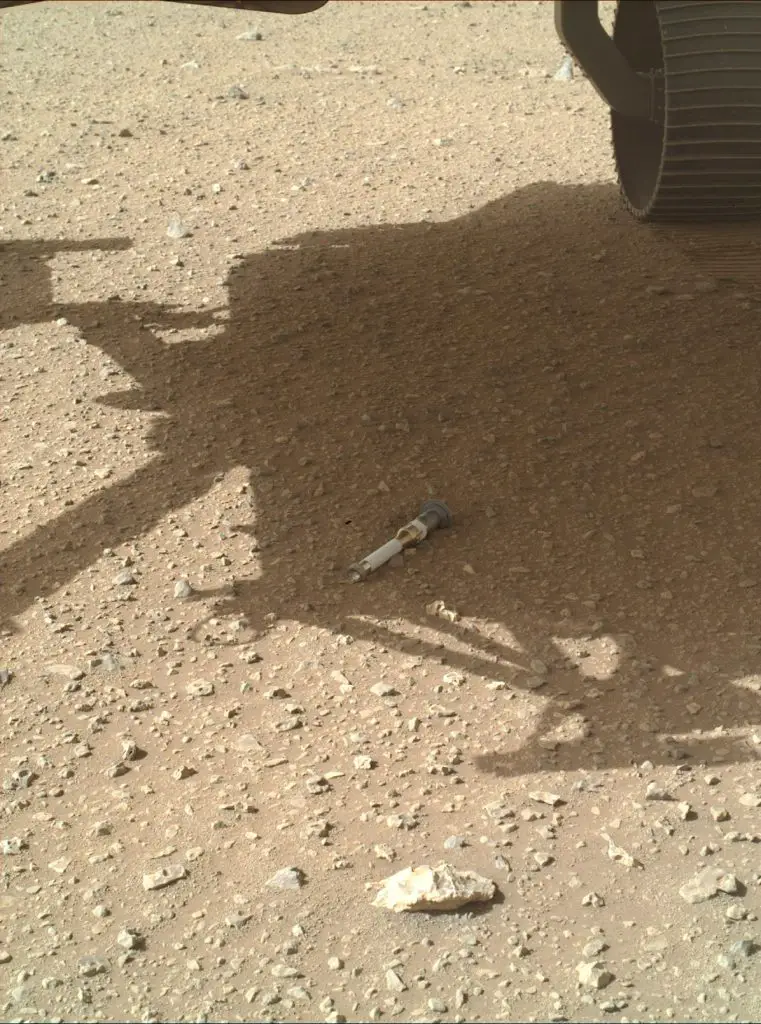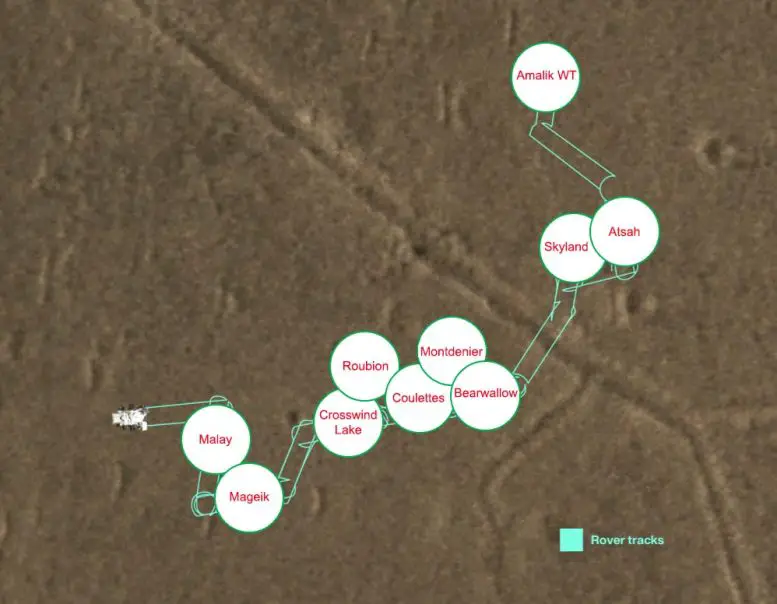Ten sample tubes, capturing an amazing variety of Martian geology, have been deposited on Mars’ surface so they could be studied on Earth in the future.
Less than six weeks after it began, construction of the first sample depot on another world is complete. Confirmation that NASA’s Perseverance Mars rover successfully dropped the 10th and final tube planned for the depot was received around 5 p.m. PST (8 p.m. EST) on Sunday, January 29, by mission controllers at the agency’s Jet Propulsion Laboratory in Southern California. This major milestone involved precision planning and navigation to ensure the tubes could be safely recovered in the future by the NASA-ESA (European Space Agency) Mars Sample Return campaign, which aims to bring Mars samples to Earth for closer study.
Throughout its science campaigns, the rover has been taking a pair of samples from rocks the mission team deems scientifically significant. One sample from each pair taken so far now sits in the carefully arranged depot in the “Three Forks” region of Jezero Crater. The depot samples will serve as a backup set while the other half remain inside Perseverance, which would be the primary means to convey samples to a Sample Retrieval Lander as part of the campaign.

NASA Sample Retrieval Lander: This illustration shows a concept for a proposed NASA Sample Retrieval Lander that would carry a small rocket (about 10 feet, or 3 meters, tall) called the Mars Ascent Vehicle to the Martian surface. After being loaded with sealed tubes containing samples of Martian rocks and soil collected by NASA’s Perseverance rover, the rocket would launch into Mars orbit. The samples would then be ferried to Earth for detailed analysis. Credit: NASA/JPL-Caltech
Mission scientists believe the igneous and sedimentary rock cores provide an excellent cross-section of the geologic processes that took place in Jezero shortly after the crater’s formation almost 4 billion years ago. The rover also deposited an atmospheric sample and what’s called a “witness” tube, which is used to determine if samples being collected might be contaminated with materials that traveled with the rover from Earth.
The titanium tubes were deposited on the surface in an intricate zigzag pattern, with each sample about 15 to 50 feet (5 to 15 meters) apart from one another to ensure they could be safely recovered. Adding time to the depot-creation process, the team needed to precisely map the location of each 7-inch-long (18.6-centimeter-long) tube and glove (adapter) combination so that the samples could be found even if covered with dust. The depot is on flat ground near the base of the raised, fan-shaped ancient river delta that formed long ago when a river flowed into a lake there.
“With the Three Forks depot in our rearview mirror, Perseverance is now headed up the delta,” said Rick Welch, Perseverance’s deputy project manager at JPL. “We’ll make our ascent via the ‘Hawksbill Gap’ route we previously explored. Once we pass the geologic unit the science team calls ‘Rocky Top,’ we will be in new territory and begin exploring the Delta Top.”

WATSON Documents Final Tube Dropped at ‘Three Forks’ Sample Depot: NASA’s Perseverance Mars rover dropped the last of 10 tubes at the “Three Forks” sample depot on Jan. 28, 2023, the 690th Martian day, or sol, of the mission. Credits: NASA/JPL-Caltech/MSSS
Next Science Campaign
Passing the Rocky Top outcrop represents the end of the rover’s Delta Front Campaign and the beginning of the rover’s Delta Top Campaign because of the geologic transition that takes place at that level.
“We found that from the base of the delta up to the level where Rocky Top is located, the rocks appear to have been deposited in a lake environment,” said Ken Farley, Perseverance project scientist at Caltech. “And those just above Rocky Top appear to have been created in or at the end of a Martian river flowing into the lake. As we ascend the delta into a river setting, we expect to move into rocks that are composed of larger grains – from sand to large boulders. Those materials likely originated in rocks outside of Jezero, eroded and then washed into the crater.”

Perseverance’s ‘Three Forks’ Sample Depot Map: This map shows where NASA’s Perseverance Mars rover dropped each of its 10 samples – one half of every pair taken so far – so that a future mission could pick them up. After five weeks of work, the sample depot was completed Jan. 24, 2023, the 687th day, or sol, of the mission. Credits: NASA/JPL-Caltech
One of the first stops the rover will make during the new science campaign is at a location the science team calls the “Curvilinear Unit.” Essentially a Martian sandbar, the unit is made of sediment that eons ago was deposited in a bend in one of Jezero’s inflowing river channels. The science team believes the Curvilinear Unit will be an excellent location to hunt for intriguing outcrops of sandstone and perhaps mudstone, and to get a glimpse at the geological processes beyond the walls of Jezero Crater.
More About the Mission
One of the key objectives for Perseverance’s mission on Mars is astrobiology, including caching samples that may contain signs of ancient microbial life. The rover will analyze the planet’s geology and past climate, lay the foundation for human exploration of the Red Planet, and be the first mission to gather Martian rock and soil samples.
Later NASA missions, in cooperation with ESA, will send spacecraft to Mars to collect these sealed samples from the surface and return them to Earth for in-depth analysis.
The Mars 2020 Perseverance mission is part of NASA’s Moon to Mars exploration approach, which includes Artemis missions to the Moon that will help pave the way for human exploration of the Red Planet.
JPL, which is managed for NASA by Caltech, built and manages operations of the Perseverance rover.



